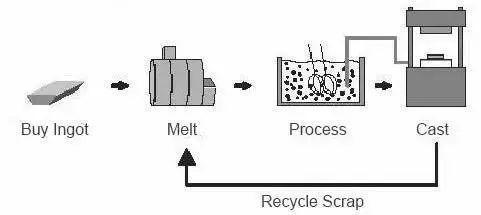The semi-solid processing method is to vigorously stir the metal melt that is undergoing the solidification process through a stirring device, and then fully break the dendrites through the stirring action to obtain new spherical or ellipsoid-shaped primary solid phases evenly distributed in the metal melt, that is semi-solid slurry, and finally the prepared semi-solid slurry is subjected to subsequent processing.

Since semi-solid processing uses non-dendritic semi-solid slurry, it breaks the traditional dendrite solidification mode. It has many unique advantages compared to liquid processing:
The solidification shrinkage of metal is reduced, the primary crystal grains are fine, the composition is uniform, and the performance is better;
The primary solid phase of the semi-solid slurry is close to spherical, and its deformation resistance is small, also the forming energy consumption is significantly reduced. Parts with complex shapes can be prepared, the forming speed is fast, and the processing procedures are greatly shortened;
The forming temperature is low, and part of the latent heat of solidification of the semi-solid slurry has been released, so the solidification shrinkage and thermal shock to the processing equipment are greatly reduced, which greatly improves the life of the mold, and the product has accurate dimensions and high performance.
The viscosity of the semi-solid slurry is high, and reinforcing materials (particles or fibers) can be easily added to improve technical problems such as segregation, sinking and floating, and non-wetting of additives in the preparation of composite materials.

